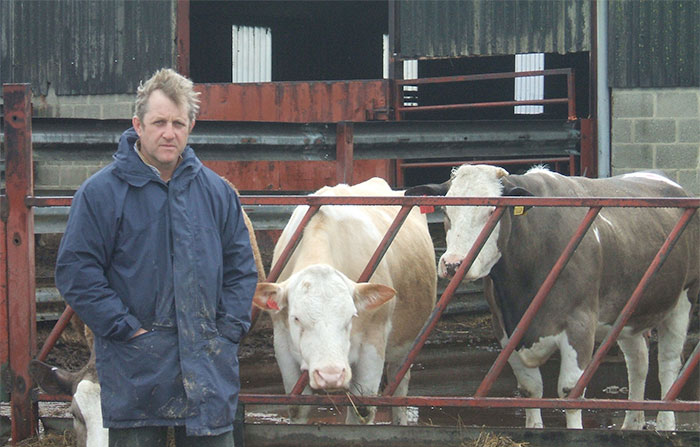
Arable farmers could boost incomes and spread their harvest workload this year by selling grain to livestock producers for crimping.
Following a number of difficult harvests, the benefits of cutting grain three to four weeks early are not to be underestimated, says feed processing specialist Kelvin Cave. “Maximum nutrient yields are achieved from crops that have not lignified and dried out – so harvesting grain at 35-40% moisture (about three weeks earlier than normal) actually increases grain dry matter yields per hectare by 15% or more. It also spreads the workload, freeing up time to cut mature crops within a weather window, and releasing land early to prepare for following crops.”
Cereals, pulses and maize can all be crimped – a process whereby crops are crushed and treated with Crimpstore preservative before being ensiled. Crimpstore ensures a controlled, restricted fermentation, producing a livestock feed with optimum nutrients levels and digestibility.
“Cereals for crimping should be harvested with a moisture content between 25% and 45%; 35-40% is ideal,” says Mr Cave. “Growers can then sell to livestock producers using a simple pricing mechanism based on the dry matter content. For example, if conventional grain at 14% moisture were trading at £200/t, grain at 40% moisture would sell at £139/t. The cereal grower doesn’t incur any drying costs, leading to considerable savings, and by combining early they get better weed control post-harvest,” he adds. “However, grain levies will still be payable.”
The benefit for livestock producers is that crimped grain has higher nutrient value and digestibility than dry grain, leading to better animal health and productivity. “Crimped grain typically has lower mycotoxin levels, less dust, and can be clamped or bagged outside, reducing the requirement for indoor grain storage,” says Mr Cave.
Middlesbrough farmer Martin Lowcock has been crimping all his winter wheat at Maltby Grange Farm for the past 10 years. He keeps 130 suckler cows on 220 acres of permanent pasture, and has a rotation of 100 acres of winter wheat, 40 acres of spring beans, 20 acres of red clover silage and 50 acres of temporary grass leys.
Mr Lowcock feeds a simple diet of crimped wheat, red clover silage, and strawlage – his own invention of baled and wrapped green straw. He sells the cattle as stores, and markets 75% of his crimped wheat to livestock farmers in Cumbria, Lancashire, Northumberland and the Borders.
“I firmly believe that farm to farm trading is the way forward for the industry,” he says. “Making crimped grain means I don’t have to invest in grain storage and drying facilities, and there is a definite yield and gross margin benefit. The early harvest also means I can establish new grass leys earlier, and sell the resulting grass keep for early grazing by a flock of hill sheep, which almost covers my entire grass seed costs.”
The wheat is harvested by local contractors Gloag & Sons, who were initially concerned about putting such high moisture crops through the combine. However, those fears proved groundless, and they now start combining at 8am before moving onto mature barley on another customer’s farm later in the day.
Scots Gap farmer Simon Bainbridge processes the grain using a Korte1400 crimper and Crimpstore 2000S preservative, and Mr Lowcock then stores it in two silage clamps to enable delivery to customers throughout the winter.
“It’s very important to ensile the crimped grain carefully, so this year I’ll be using an O2 barrier and side sheets on both my crimp and forage clamps,” he says. “Kelvin Cave Ltd have always provided me with a great deal of help and advice, so anyone considering crimping for the first time can rest assured that they will be well supported through the process.
“Given the large area of spring crops sown this year, cutting early for crimping will free up valuable time and enable farmers to get their rotation back on track, while also boosting yields and gross margins,” he adds. “It’s a win-win for all involved.”
